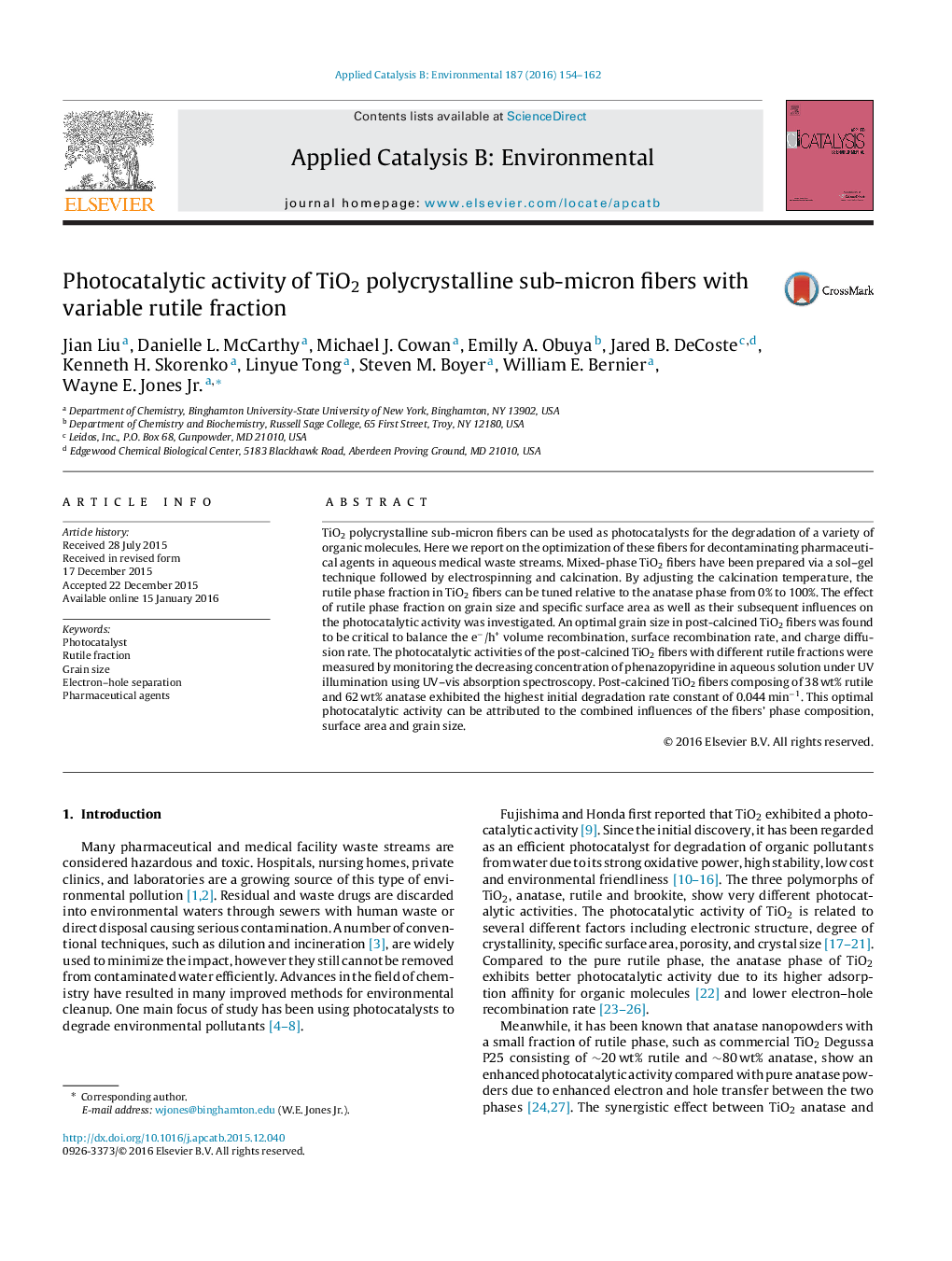| Article ID | Journal | Published Year | Pages | File Type |
|---|---|---|---|---|
| 45097 | Applied Catalysis B: Environmental | 2016 | 9 Pages |
•Provide insights for decontaminating toxic pharmaceutical agents.•TiO2 fibers with 38 wt% rutile have the optimal photocatalytic performance.•Surface area, grain size and phase composition affect the photocatalytic activity.•An optimal grain size balances e−/h+ recombination rate and charge diffusion rate.•Higher rutile fraction will result in larger grain size and lower surface area.
TiO2 polycrystalline sub-micron fibers can be used as photocatalysts for the degradation of a variety of organic molecules. Here we report on the optimization of these fibers for decontaminating pharmaceutical agents in aqueous medical waste streams. Mixed-phase TiO2 fibers have been prepared via a sol–gel technique followed by electrospinning and calcination. By adjusting the calcination temperature, the rutile phase fraction in TiO2 fibers can be tuned relative to the anatase phase from 0% to 100%. The effect of rutile phase fraction on grain size and specific surface area as well as their subsequent influences on the photocatalytic activity was investigated. An optimal grain size in post-calcined TiO2 fibers was found to be critical to balance the e−/h+ volume recombination, surface recombination rate, and charge diffusion rate. The photocatalytic activities of the post-calcined TiO2 fibers with different rutile fractions were measured by monitoring the decreasing concentration of phenazopyridine in aqueous solution under UV illumination using UV–vis absorption spectroscopy. Post-calcined TiO2 fibers composing of 38 wt% rutile and 62 wt% anatase exhibited the highest initial degradation rate constant of 0.044 min−1. This optimal photocatalytic activity can be attributed to the combined influences of the fibers' phase composition, surface area and grain size.
Graphical abstractFigure optionsDownload full-size imageDownload as PowerPoint slide
